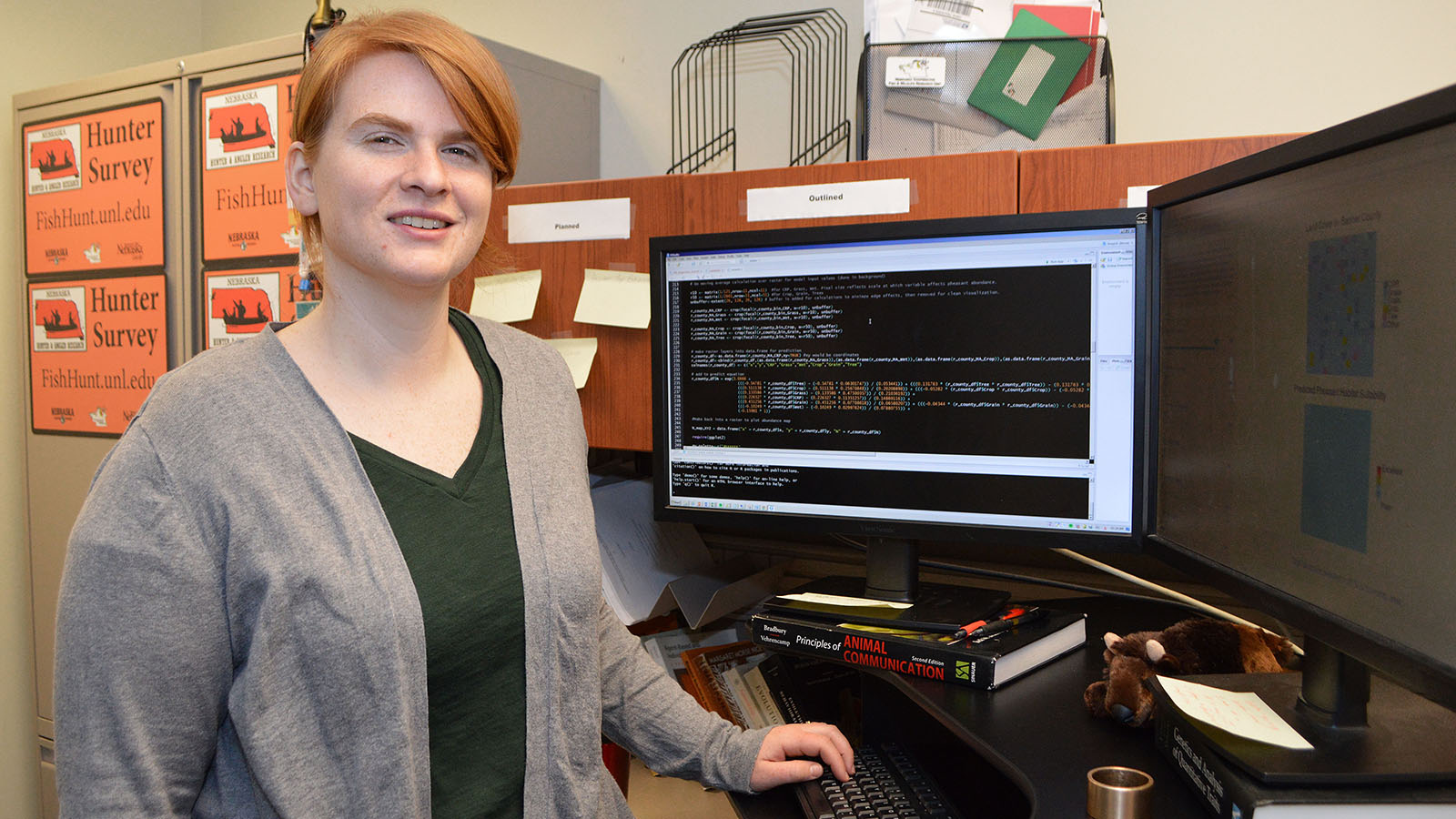
A new web-based application by the Nebraska Cooperative Fish & Wildlife Research Unit at the University of Nebraska-Lincoln allows Nebraska wildlife managers to virtually manipulate land cover in a region to see how pheasants would be affected — and how much it might cost.
Though the Pheasant Habitat Simulator was built specifically to help the Nebraska Game and Parks Commission bridge the gap between upland game bird habitat research and land management for the species, Lyndsie Wszola and her colleagues built it as an open source application, housed on a collaborative programing website.
That means as long as one knows the relationship between their question of interest and land cover, he or she can replace the pertinent bits of code to create an entirely new web application suited to their needs. Maybe linking cropping practices and nitrates for example, or the emerald ash borer and spread among urban trees.
It’s a cliché, but the options are endless.
“This is not just a pheasant app,” said Wszola, lead author on the paper featured in PlosOne and research associate with the COOP Unit at the School of Natural Resources. “It is a framework. Because it’s open source, we’re interested in seeing people use it in new ways. We want to see how it grows and progresses.”
The application itself came out of a request by NGPC to create an easy-to-use, localized and efficient tool to help manage for pheasants. COOP scientists previously had provided NGPC with a thematic Nebraska map showing the state on a color gradient: red for areas with better pheasant habitat, and blue for areas with poorer habitat. The map was instrumental in the development of the Berggren Plan for Pheasants, and was used to predict what might happen to pheasants under future land cover scenarios.
“But if the scenario doesn’t fit what actually occurs, it’s not useful,” said TJ Fontaine, co-author on the paper and assistant COOP Unit leader. “A static map, the minute it’s made, is always out of date. What the world wants is to answer, ‘What can I do today to affect the (wildlife) population where I am?’”
This app allows Nebraska game bird managers to do that.
The Pheasant Habitat Simulator shows each county in Nebraska as a pixelated grid, representing six land cover types, as well as how suitable the land cover is for pheasant populations. Users can manipulate the ratio among them, increasing wetland, for example, while decreasing pasture or cropland. In the background, the app uses a statistical model of pheasant-habitat relationships in Nebraska to translate the change in land cover to a change in the pheasant habitat suitability; on the user side, a visual representation of their decisions’ effectiveness is displayed. A second tab shows the estimated costs of those actions, figures tied to average land-use values based on county-level data.
Traditionally, building this type of app would cost an organization thousands, rendering it unaffordable for many organizations, Fontaine said. But manipulating this open-source application only requires an individual’s time and ingenuity.
“We can move science forward faster if we close the gap in communication between researchers and users,” he said. “We believe this (product) makes the gap narrower. It helps researchers communicate information outside the walls of academia to those that actually use it.”
Chris Chizinski, assistant professor of human dimension and wildlife management at SNR, agrees.
“Decision-support apps, such as Lyndsie and T.J.’s, are incredibly useful in synthesizing and illustrating complex models in a way that clearly shows the trade-offs in alternative management approaches,” he said. “With the development of more open-source tools available, I think that these types of apps will become a greater tool in science communication.”
The app was designed using Shiny, a software package for the open-source statistical programming language R, and it will be updated based on user feedback “as long as the tool is useful,” Wszola said.
Authors on the paper included graduate students and professional researchers from SNR; state and federal natural resource agencies; nonprofit organizations; and the private sector.
Access the journal article here.
Shawna Richter-Ryerson, Natural Resources